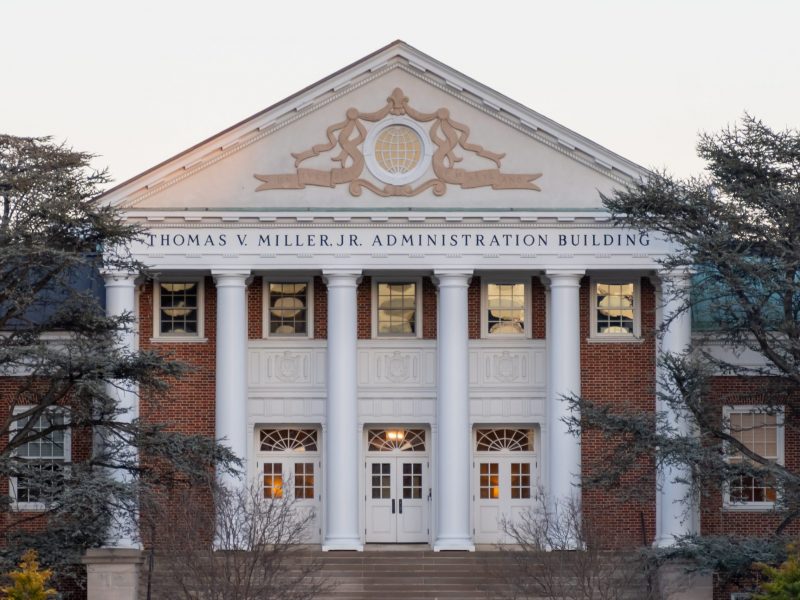The university formally broke ground on its new Physical Sciences Complex last month, preparing to construct a facility to house its physics and astronomy departments and other researchers who will use its state-of-the-art laboratories.
The $128 million complex is an example of a state investment in higher education designed to promote job growth, said Gov. Martin O’Malley, who joined university, state and federal officials at the May 24 ceremony. O’Malley said funding to the state’s universities should not be cut even in tough economic times.
“We continue to support higher education because higher education … creates jobs, creates opportunities,” O’Malley said at the groundbreaking.
O’Malley — who is preparing to run for re-election this fall against former Gov. Bob Ehrlich, who dedicated less funding to the state’s universities when he was in office — said the new building was a key part of his agenda, calling the complex the top capital priority of his administration.
University officials and researchers said the new facility will quickly make a big impact on key science departments when the first phase of the project opens in the summer of 2013, as it will let them move out of aging structures like the Physics Building, which dates to 1952.
Speaking at the groundbreaking, university President Dan Mote joked that in the Physics Buiding “it rains on every floor” because of ongoing leakage problems, and referred to the facility as “dilapidated” and “dangerous.”
Computer, mathematical and physical sciences college Dean Steve Halperin added that the complex “may be the best physical sciences building anywhere in the world” upon its completion — a big step up from existing conditions.
“Any time we hire a physicist these days, it means we spend a million dollars doing lab renovation,” physics professor Jordan Goodman said in an interview. “The main thing a scientist wants to be able to do is get his work done. And if the conditions around him don’t allow it, he can’t do that.”
The new seven-story complex, located next to the Computer and Space Sciences Building, will eventually include more than four dozen high-tech labs that will allow for sophisticated research.
For a while, however, the university will have to make do with its existing facilities. Dignitaries overturned ceremonial shovelfuls of dirt at the groundbreaking, but it will likely be at least three years before anyone can begin research at the new complex.
“People who are entering now as freshmen will see it done when they’re leaving,” astronomy professor Douglas Hamilton said. “From an undergrad point of view, it’s gonna be … a construction site for a number of years.”
Furthermore, the university only has funding — mostly from the state but also $10.3 million in federal stimulus money — for the first phase of this project, officials said. University officials hope to later add a second building and more classroom space.
Physics professor Andrew Baden said cost shouldn’t stand in the way of upgrading facilities, predicting that the state’s economic benefit from the new complex could be enough for the building to pay for itself within a year of its completion.
“It’s all about the university being a big research university and protecting that,” Baden said. “If you stand still, you get left behind … particularly in the high-tech sciences.”
U.S. House Majority Leader Steny Hoyer (D-Md.), a university alumnus, said the complex is an excellent project for federal stimulus money, as it provides short-term and long-term economic benefits, first during its construction and then once the facility begins to attract research.
“I want to say we have some of the best scientists in the world at the University of Maryland,” Hoyer said. “This [building] is saying to young researchers, young scientists, young people in college, ‘Come to the University of Maryland, and do what you want to do.'”
newsdesk at umdbk dot com


